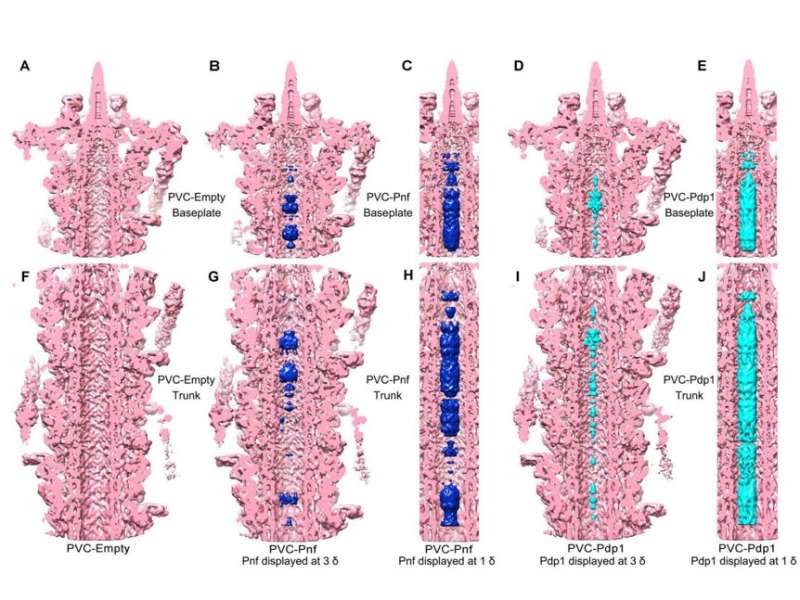Photorhabdus virulence cassette as a causative agent in photorhabdus asymbiotica

PVC effectors Pdp1 (a new family of widespread dNTP pyrophosphatase effector in eCIS) and Pnf (a deamidase effector) are loaded inside the inner tube lumen in a "peas-in-the-pod" mode. Moreover, Pdp1 and Pnf can be directly injected into J774A.1 murine macrophage and kill target cells by disrupting dNTP pools and actin cytoskeleton formation, respectively. The results provide direct evidence of how PVC cargoes are loaded and delivered directly into mammalian macrophages.
Contractile injection systems (CISs) are widely distributed in bacteria and archaea that can form a nanomachine resembling the contractile tails of bacteriophage (T4, P2, etc.) to translocate proteins and nucleic acids. The P. asymbiotica was shown to be involved in the human infection with severe skin lesions. The PVC loci within P. asymbiotica genome produce molecular needle complexes and encode several putative effector genes. It would be a candidate P. asymbiotica weapon that participates in the attack of mammalian cells, but substantial evidences will be needed to verify this hypothesis.
In this study, researchers have characterized the PAU_RS16575 as a potent PVC effector, which is widely present in bacteria. This toxin (designated as Pdp1, Photorhabdus dNTP pyrophosphatase 1) is responsible for the cytotoxicity towards the eukaryotic cells on the basis of its dNTP pyrophosphatase activity.Meanwhile, researchers have shown that the PVC effector Pdp1, together with Pnf that has been investigated before, could be loaded and translocated directly into the mammalian macrophage through PVC complex to induce cell death.
Besides, the loading scenario of PVC effectors Pdp1 and Pnf are demonstrated by cryo-EM detection and the targeting cells of PVC are determined. The direct translocation of the effectors by PVC is also validated by in vitro experiments.
These molecular nanosyringes show potential for biotechnology application in delivering drugs or proteins into eukaryotic hosts and this work sets the foundation for further investigations of the PVC-related eCISs and their effectors.
More information: Xia Wang et al, Characterization of Photorhabdus Virulence Cassette as a causative agent in the emerging pathogen Photorhabdus asymbiotica, Science China Life Sciences (2021). DOI: 10.1007/s11427-021-1955-4
Journal information: Science China Life Sciences
Provided by Science China Press


















